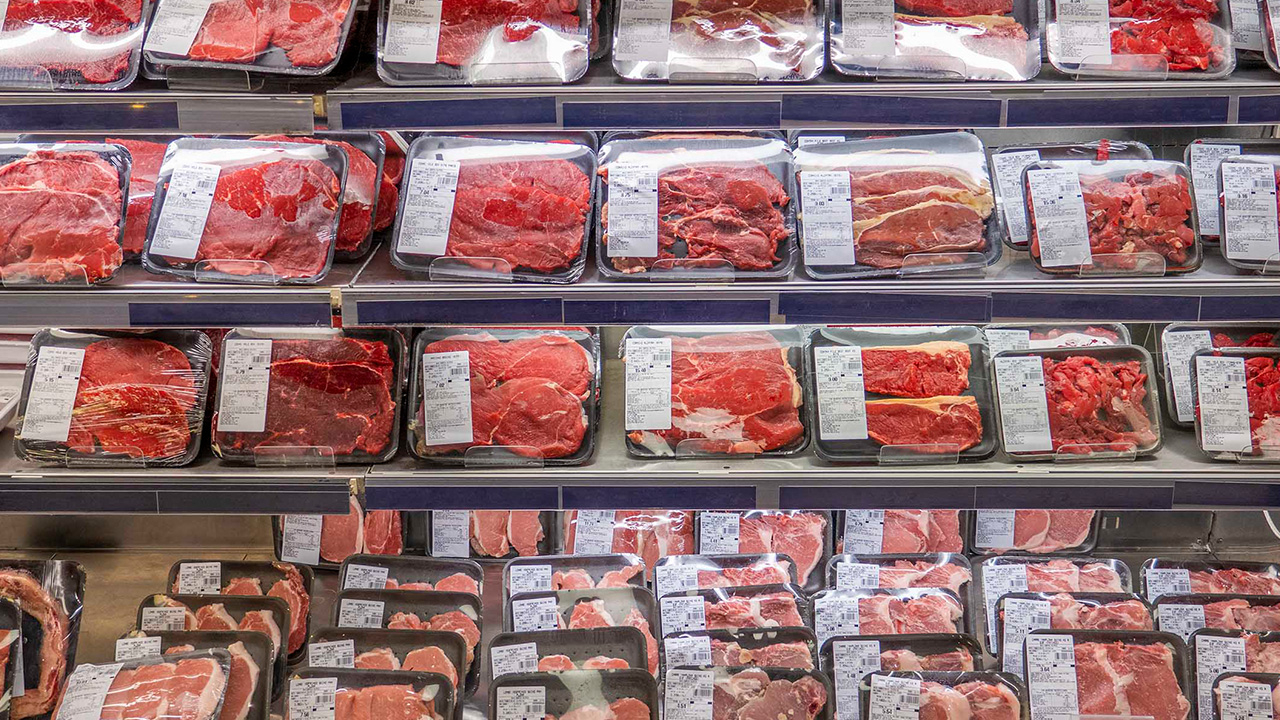Managing a self-adhesive materials inventory
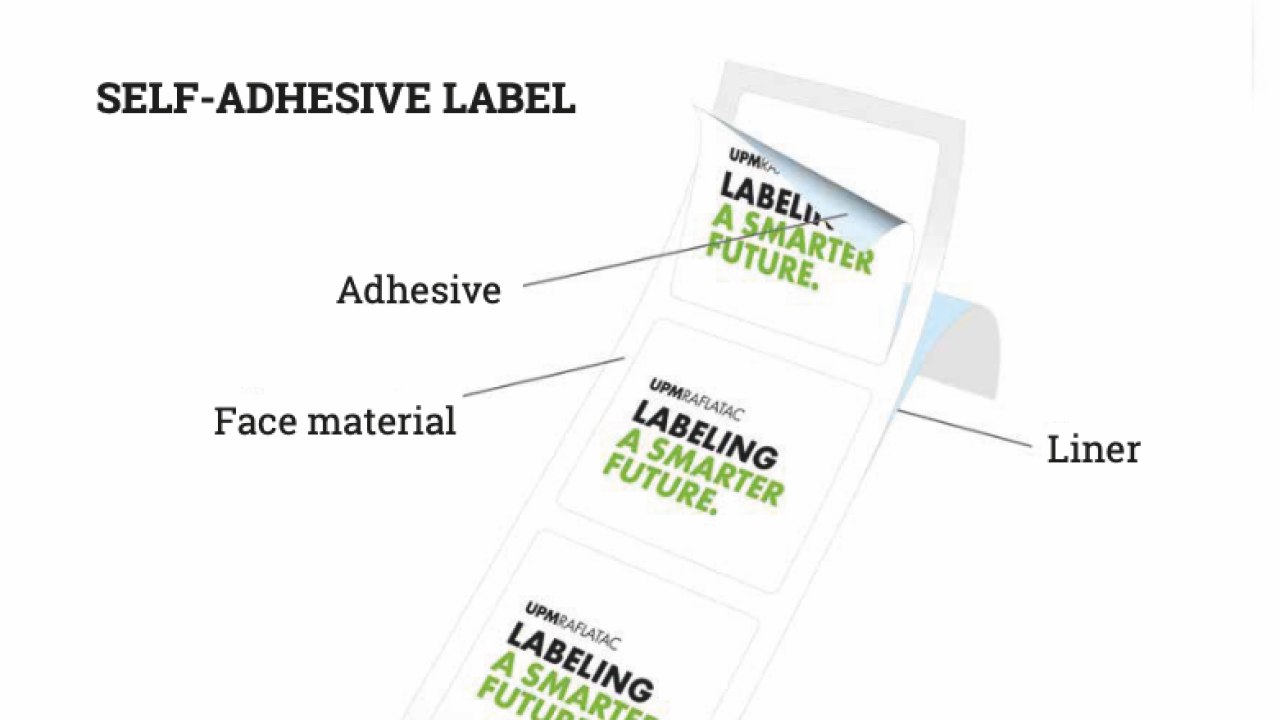
This article examines all the aspects of managing a self-adhesive roll inventory: minimizing the complexities of the ordering process; automated stock control; more effective estimating; and minimizing waste by setting up a detailed shop floor reporting system.
Catalog and specifications
Each of the three individual components of a self-adhesive laminate – face material, release liner and adhesive – have their own characteristics, and suppliers offer the converter many combinations of these three elements in their product catalogs.
The face material (frontal) is the layer that will be applied on the final product. During this application the release liner (backing) will be removed and the adhesive (glue) will make the face material stick to the product surface.
The specifications for the face material are obviously related to the appearance and the shelf-conditions of the final product. A label on a wine bottle is often a coated paper, sometimes with an extra finishing like embossing or a soft touch varnish. An oil-can label will require a very resistant material like PE (polyethylene). Sometimes extra variable data will be printed on the label during the application process. The adhesive will have to meet the customer requirements for storage conditions (eg deep freeze) or end user treatments (removable, permanent).
The liner is often chosen in relation to the adhesive and the application process used, either manual, semi-manual or fully automated.
Many more combinations and material characteristics can be found in the product selectors of the different suppliers. Every supplier offers a catalog of set combinations of the three components to avoid an endless list of individual products, while some suppliers allow converters to order almost any combination. The product selector guides the user to the most suitable material for the finished product and its end use conditions. We will use the word ‘substrate’ here to define a specific combination from one supplier.
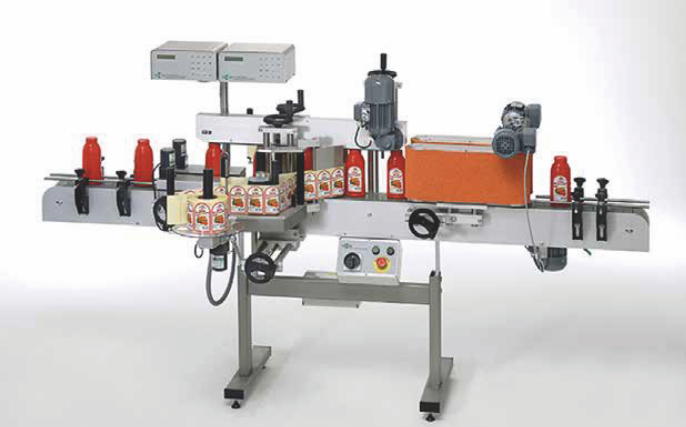 The selection process requires specific technical knowledge and because the printer is the one who mostly buys the self-adhesive material, they will need to provide this knowledge. The very first dialogue between the printer, the brand owner and the applicator for a new product series is often about the conditions in which the product will be labeled and the usage of the label. This will define the selection criteria.
The selection process requires specific technical knowledge and because the printer is the one who mostly buys the self-adhesive material, they will need to provide this knowledge. The very first dialogue between the printer, the brand owner and the applicator for a new product series is often about the conditions in which the product will be labeled and the usage of the label. This will define the selection criteria.
Because different suppliers do not offer perfectly equal components, it is not easy to create a set of equivalent substrates from different suppliers that can be exchanged in all cases. For this reason, the brand customer’s product specialists will sometimes require one specific substrate from one supplier to be used, or will only allow for one or more specific alternative substrates.
“Inefficient stock management is now recognized as one of the leading causes of waste and incorrect estimating”
It is advisable for suppliers to provide a set of characteristics in their catalogs that will allow converters to find equivalent for each individual component - for example all permanent adhesives or all PE face materials.
Only when all three components match would alternative substrate choices become available.
In some cases, it can be useful for converters to send substrate specification sheets, as provided by the self-adhesive material supplier, to the customer as soon as possible. One can argue that this will restrict options later, but storing the chosen supplier’s substrate identification code in the customer’s product specifications will avoid trouble later, since more recently produced labels could end up on the shelf next to labels produced earlier. The more sensitive this issue, the less likely are customers to allow for alternatives.
Order and delivery
By always ordering the same substrate for every re-run job, the converter will not make a mistake. Luckily, the substrate identification codes for self-adhesive materials are independent of the ordered length and size. Using a 180mm-wide roll on a very narrow press or a 330mm wide roll on a wider press does not require a change in the substrate’s identification code. Of course, the width and length must be provided upon ordering.
“Every complaint about an individual roll, whether before or after production, can be traced in the supplier’s production database by sending them the roll ID”
By using a price per sqm, self-adhesive material suppliers allow printers to use one purchase price for one substrate, independent of the width. This leads to the first two levels of a self-adhesive material catalog: substrate (a specific combination of the three components, independent of width) and material (a specific width of a substrate). At the substrate level, only sqm is relevant; for the material level, the width and length are added.
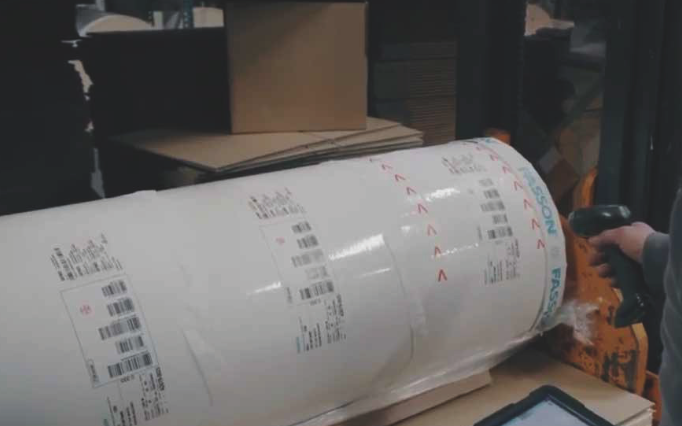 But this does not mean that ordering is easy. Price tables are related to the quantity ordered and supplementary restrictions can limit the options for ordering. Sometimes a minimum quantity needs to be ordered and, in some cases, it is necessary to order a predefined length, like 2,000m, or width, say 1,000mm. The purchaser must indicate how this width, far too large for production, will need to be slit by the supplier (for example 1,000mm = 3 x 330 mm + 10 mm) and they will need to pay for the complete sqm ordered, even though the supplier can be asked to destroy the left-over width.
But this does not mean that ordering is easy. Price tables are related to the quantity ordered and supplementary restrictions can limit the options for ordering. Sometimes a minimum quantity needs to be ordered and, in some cases, it is necessary to order a predefined length, like 2,000m, or width, say 1,000mm. The purchaser must indicate how this width, far too large for production, will need to be slit by the supplier (for example 1,000mm = 3 x 330 mm + 10 mm) and they will need to pay for the complete sqm ordered, even though the supplier can be asked to destroy the left-over width.
This means that in the order process, the user should be able to combine individual material orders into a cut-instruction for the supplier, all for the one substrate-ID.
Almost every self-adhesive material supplier now offers electronic ordering systems, but the more complex the set of limitations, the larger the number of system rejections.
The benefits of electronic ordering are great for both sides. The supplier will not have to retype instructions and can have software handle most orders automatically. The customer will receive an almost immediate order confirmation for delivery quantity, date and price and can schedule accordingly.
When the truck leaves the supplier’s production site, the customer will receive an electronic ASN (advanced shipping note or manifest) with the details of all rolls that are on the truck.
This will allow for a very easy reception procedure at the printer. The packing slip of the truck driver needs to be checked with the goods unloaded from the truck and with the details of the ASN.
No re-identification is necessary, since the supplier’s identification labels on every individual roll will match the roll IDs in the computer’s stock database after processing the original ASN data. The only thing to do is to move the rolls – or pallets with rolls – to the appropriate stock location.
Since the stock locations are identified with a barcode, the operator only needs to scan the supplier’s barcode and the barcode of the stock location.
Traceability and inventory
Using the supplier’s roll identification for each individual roll is the third level of an adequate self-adhesive material inventory, next to substrate and material (width).
Every complaint about an individual roll, whether it is before or after production, can easily be traced in the supplier’s production database by sending them the original roll ID.
At the same time, a system with perfect in-house traceability of all rolls in stock can be set up. Every roll can be at ‘any’ location in the warehouse or on the shop floor. No need to book the consumption of a roll when leaving the warehouse and booking it back in on return. The warehouse is everywhere, and all rolls are in stock until all the meters of a roll are consumed. The only thing to do is to scan roll ID and stock location ID upon each roll-stock location change.
Rolls can be placed into racks at any height and you do not need to put all rolls from the same substrate together in one area, so less floor space is required. There is no need to use special stock locations for quarantine. A roll can be quarantined by a special scan function and the software will prevent this roll from being used again until it is de-quarantined.
Counting stock is nothing more than scanning all individual rolls. Instead of doing this once a year, this can be organized in groups of stock locations. When stock managers have some spare time, they can check one or more stock locations by scanning the rolls in it. The result of these scans will be compared with the information in the rolls database and errors can be corrected immediately. The disciplined scanning and regular counting of rolls is the foundation of a fully reliable inventory.
“According to figures from Cerm, in extreme cases only half the total material ordered by the converter ends up actually going to the customer as finished labels”
Based on this precise data, only the substrates required for the current and next day’s production need to be ordered. The only thing to do is estimate exactly what will be needed. This means a solid comparison between a plant’s theoretical and actual consumption must be set up. Fortunately, the organization of a detailed roll consumption system will, at the same time, deliver all data needed for this kind of detailed traceability.
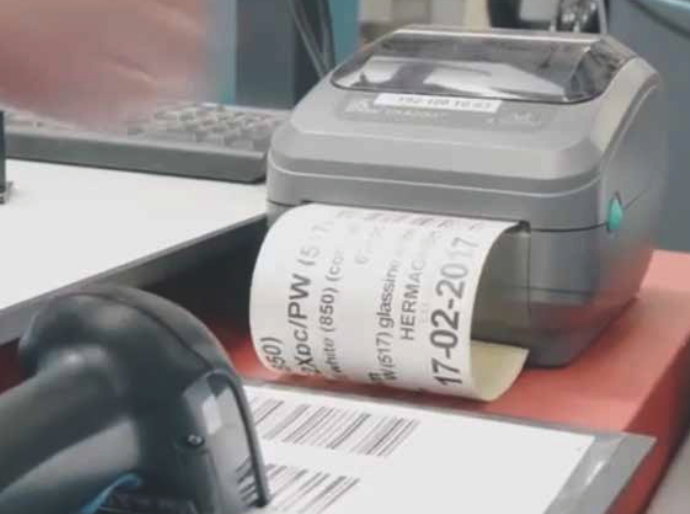 The warehouse team will put all rolls necessary for the next few hours’ production close to every press. They will, of course, not forget to scan this new stock location, and they will always take the oldest rolls first. The press operators then scan the barcode of the new roll upon every roll change on the press. An automatic counter registers the meters consumed until the roll is switched again. When a roll is not completely consumed, the remaining meters in stock will be the new stock quantity for this individual roll, and a new identification label with the same roll ID and these remaining meters will be printed. The operator will stick this on the roll for precise re-identification.
The warehouse team will put all rolls necessary for the next few hours’ production close to every press. They will, of course, not forget to scan this new stock location, and they will always take the oldest rolls first. The press operators then scan the barcode of the new roll upon every roll change on the press. An automatic counter registers the meters consumed until the roll is switched again. When a roll is not completely consumed, the remaining meters in stock will be the new stock quantity for this individual roll, and a new identification label with the same roll ID and these remaining meters will be printed. The operator will stick this on the roll for precise re-identification.
As well as booking roll changes, the press operator also books each job change on the press. The combination of these two will give a detailed description of material consumption on every job. This information is then compared with the estimated material consumption. At the same time this system provides a detailed list of all paper roll IDs used for this production job.
The linear meter counter can be a third-party device mounted on the press, but can also be delivered by the computer driving the press.
Roll changes can be booked manually by the press operator, but today’s automatic unwinders can deliver this information electronically. The operator will scan every roll loaded onto the unwinder, which sends the new roll ID and the exact timestamp to the MIS system which process the data.
Job changes can of course be booked manually by the press operator, but today more and more presses can deliver this information to the MIS, even if only feeding back job start and end.
All of this gives the converter a precise inventory. The operations team can see which rolls have almost reached their expiration date, based upon the validity date on the original ASN, and can see which alternatives are still in stock.
This does not mean that there is no place for human stock-keeping intelligence. You can limit the widths you buy to avoid roll-width switches when consuming left-overs, for example. Or you can guide customers to order larger quantities where there is a high minimum order quantity to avoid leftovers for less used substrates.
Estimating and reporting
The ultimate key to reducing inventory is precise estimating of substrate quantities needed for production. This will start by breaking down current waste totals in the finest possible detail. According to figures compiled by MIS specialist Cerm, in the most extreme cases only half the total material ordered by the converter ends up actually going to the customer as finished labels.
Waste estimation techniques include setting up an average waste per roll and multiplying the number of roll changes required for a given production length. This can be determined by checking how many meters are thrown away at the end of every roll; how many meters are not used at the beginning of every roll; and how many meters are lost when switching rolls. You can even use two bins to collect this data, one at both ends of the press.
Detailed waste reduction instructions, based on these estimates, should be followed by the press operators. As a practical example: suppose you have to run five different products of the same series – same paper, size, shape – on one job on one roll. The printing waste is at the ‘end’ of the roll that enters the first finishing device. But it can be reused for the set-up of the next roll. So the start of the first product and the end of the last product will get the largest production waste quantity. There is no need to waste the same quantity of material for the products in the middle of the roll.
A good shop floor reporting system can help determine the biggest components of your waste. If you measure the length entering every individual machine for one job, you will know how many meters are lost during the different production steps like printing or finishing.
The same reporting system can give you much more useful information. You will be able to set up an OTIF (on time in full) delivery rating for your material suppliers. You will know exactly the total sqm purchased per type of substrate for your annual price negotiations.
To read more or to buy the book, go to www.labelsandlabeling.com/label-academy
Stay up to date
Subscribe to the free Label News newsletter and receive the latest content every week. We'll never share your email address.

